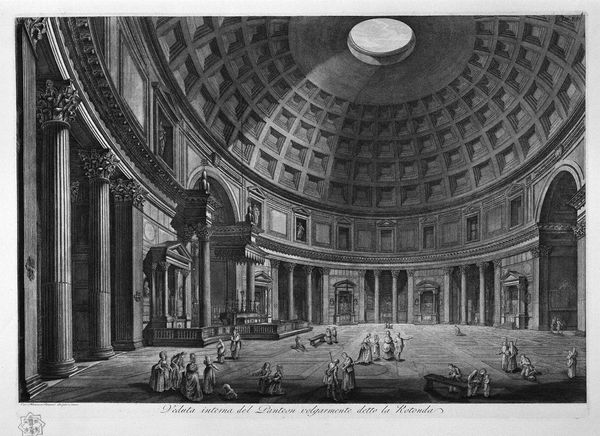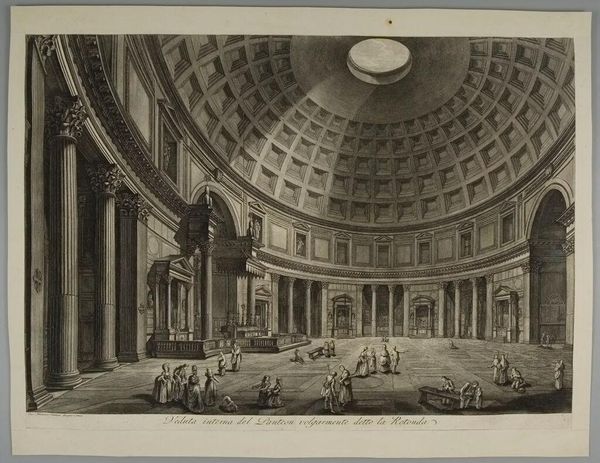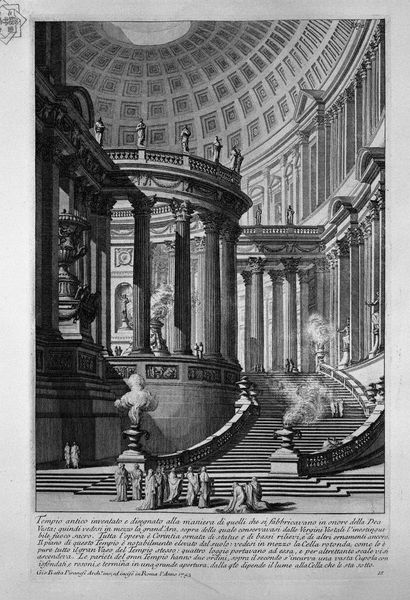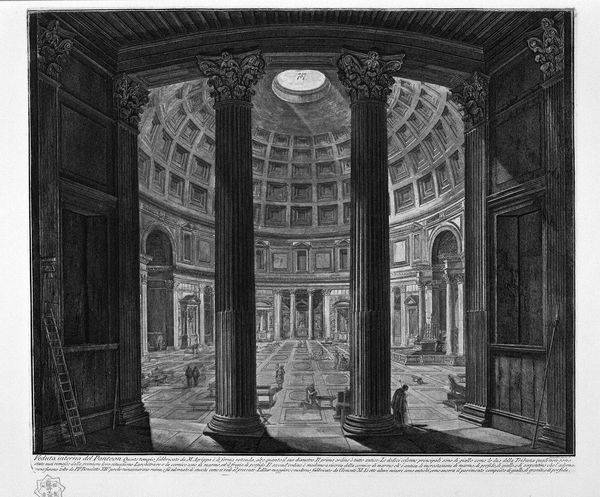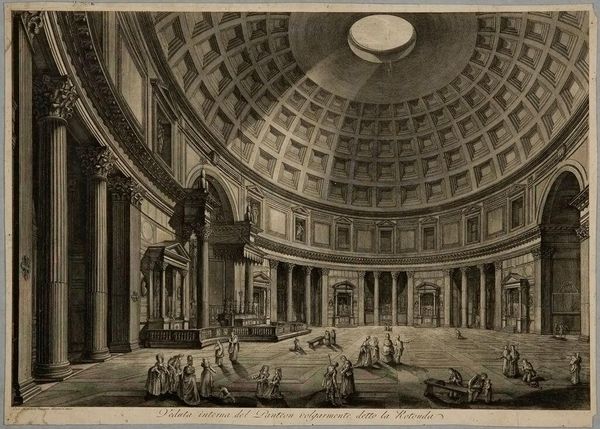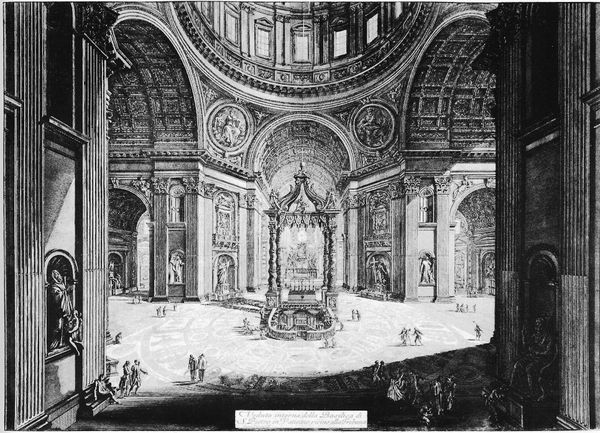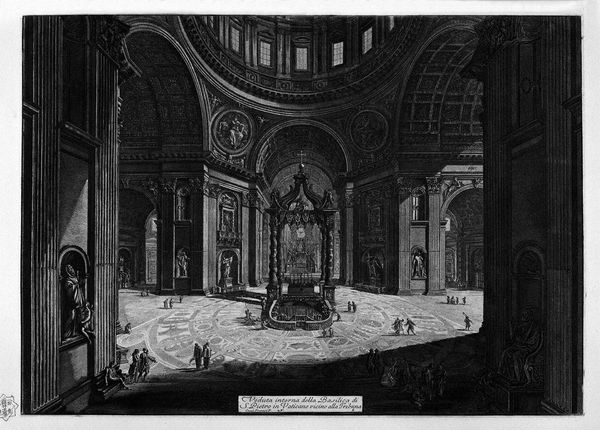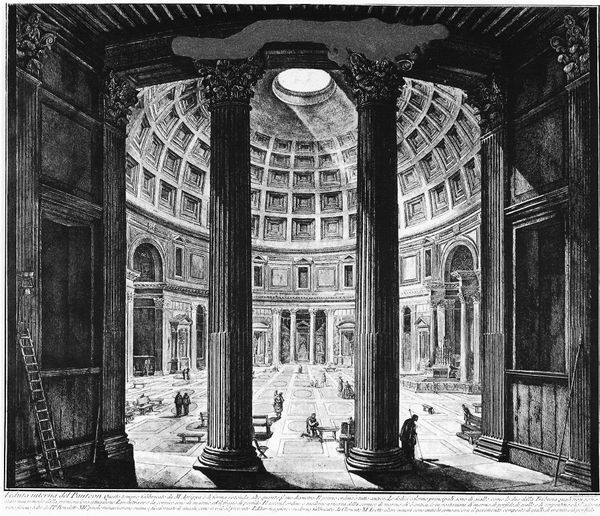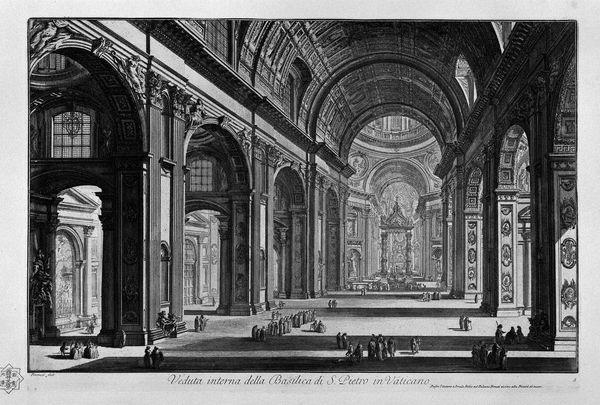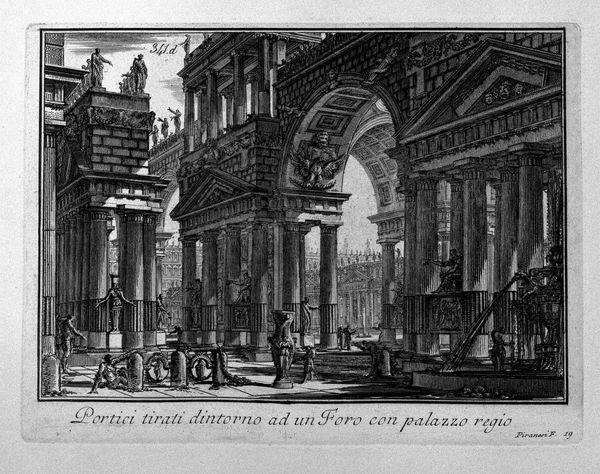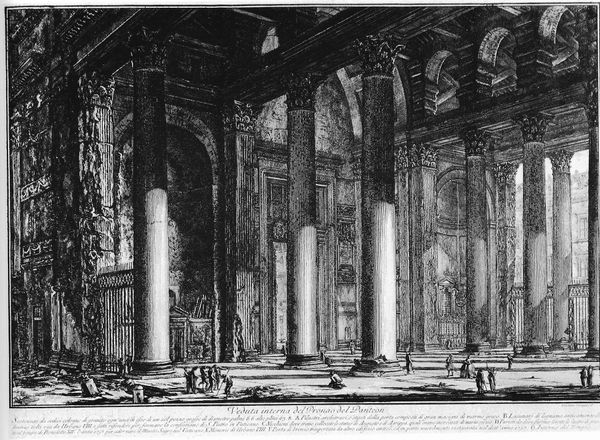
print, etching, engraving, architecture
#
neoclacissism
# print
#
etching
#
old engraving style
#
column
#
arch
#
history-painting
#
engraving
#
architecture
Copyright: Public domain
Editor: This etching from 1756, by Giovanni Battista Piranesi, is titled "The Roman Antiquities, t. 1, Plate XV. Pantheon." It captures the interior with such precision. I’m struck by the immensity conveyed despite its relatively small size. What key symbolic elements are at play in this piece? Curator: The Pantheon itself is profoundly symbolic, even before Piranesi added his interpretation. Consider the oculus, the opening at the top. In many traditions, it is a powerful symbol connecting the earthly realm to the divine, the 'eye of heaven'. It suggests both vulnerability and receptivity to higher powers. And Piranesi exaggerates this effect! What emotions does the extreme perspective elicit in you? Editor: A sense of awe, certainly, but also a slight feeling of being overwhelmed by history and grandeur. Does Piranesi's style amplify this in any particular way? Curator: Absolutely. His use of exaggerated perspective, the dramatic contrasts of light and shadow – the chiaroscuro – imbue the space with a sense of theatricality and even anxiety. Remember that for his contemporaries, Rome wasn’t just a city; it was the potent, sometimes troubling, symbol of a lost empire and a different way of being in the world. Can you see how the tiny figures underscore the monumentality, thus rendering human existence as fragile? Editor: I do see that. So, it is a visual commentary on the power of the past and perhaps the insignificance of the individual. Curator: Precisely. Piranesi's Pantheon becomes a stage where we confront our own place in the grand narrative of history and our complex feelings of memory, cultural identity, and even mortality. Editor: This has been truly insightful. Thank you for illuminating the symbolic language in Piranesi’s work. Curator: My pleasure. I'm glad to have helped you unearth some of its layers of meaning.
Comments
No comments
Be the first to comment and join the conversation on the ultimate creative platform.
